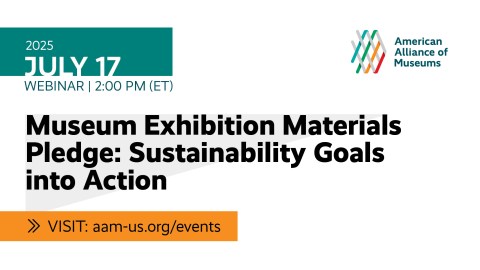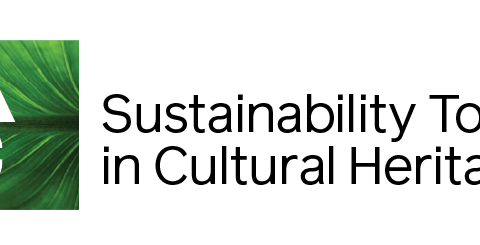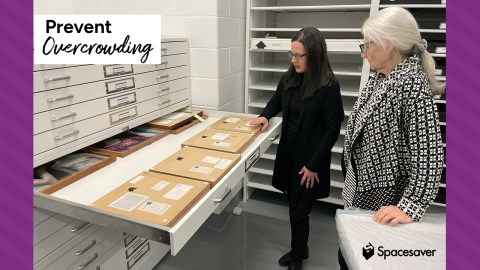
Earlier this year a guest post on this blog advocated for museums harnessing their endowments to mission-related goals through a financial practice known as impact investing. In today’s post, Anna Raginskaya, Financial Advisor, Blue Rider Group at Morgan Stanley, dives into the details of using investments as a force for good. This is the first of a three part-arc on this topic—in part two Anna shares some practical advice, and in part three President and CEO Richard Piacentini will tell us how the Phipps Conservatory and Botanical Gardens has reorganized its investment portfolio to support green and sustainable practices.
–Elizabeth Merritt, VP Strategic Foresight and Founding Director, Center for the Future of Museums
Recent dynamics in the museum field are bringing conversations about ethics to the boardrooms of many institutions. In turn, museum leaders are increasingly focused on developing ways to better formalize and express their institution’s mission and values. One meaningful step is to evaluate museums’ endowments, acknowledging that every investment has an impact – either positive or negative.
By aligning their portfolios more closely with their missions, institutions have the ability to advance their values and enhance long-term performance. This post will explore the concept of sustainable and impact investing and discuss why it is increasingly important for museums to consider this approach. Part two of this series will outline some common barriers and practical considerations for implementing a sustainable and impact investing strategy.
What is sustainable and impact investing?
Sustainable and impact investments are made with the intention to generate measurable, positive social and/or environmental impacts, alongside risk-adjusted, market-rate financial returns. Industry terms like impact investing, Environment, Social, and Governance (ESG), Mission Related Investment (MRI) and Socially Responsible and Sustainable Investing are often used interchangeably. Sustainable investing has a long history, dating to the 18th century when the Methodists resisted investments in liquor, tobacco and gambling, and gained public awareness with divestment calls during the Vietnam War and apartheid.
There are a wide range of impact objectives that investors may consider, such as advancing solutions to combat climate change, promoting gender equality, and improving lives for low income populations. Increasingly investors are looking to global frameworks such as the UN Sustainable Development Goals as a guiding framework.
Sustainable investing encompasses a broad spectrum of approaches an organization can take based on its individual goals and risk tolerance – from minimizing exposure to objectionable industries, to proactive investment in targeted sectors to create specific social benefit.
A Mission-Related Investment (MRI) is any investment activity that furthers the organization’s mission. It can take the form of any of the approaches below:
- Restriction Screening – Intentionally avoiding certain companies, industries or countries due to values or risk-based criteria
Example: removing exposure to gun manufacturers and distributors in the portfolio
- ESG Integration – Proactively considering environmental, social and governance (ESG) criteria alongside financial analysis to identify opportunities and risks during the investment process
Example: investing in an equity strategy actively tilted towards companies with meaningful practices around board, executive, management and employee diversity
- Thematic Exposure – Investing in themes related to solving sustainability related domestic and global challenges
Example: targeted investments in public companies focused on renewable energy
- Impact Investing – investing in generally private opportunities which provide capital to businesses focused on creating targeted change through their business model, products and services
Example: a private investment in an agriculture fund which focuses on natural and antibiotic free crops, quality employment for farm workers, and technological enhancements to drive higher yield and lower land and water use.
Sustainable investing is not niche: over the last decade, the field of sustainable investing has grown dramatically. One in four dollars—$12 trillion of assets under professional management in the U.S.—is invested in sustainable, responsible, or impact investing strategies across almost every asset class (1). According to a recent survey by the Morgan Stanley Institute for Sustainable Investing, the percentage of institutional investors, including corporate pensions, endowments, and foundations pursuing or actively considering incorporating ESG practices into their investment process has increased to nearly 85%. Most institutions are relatively new to this idea, with 60% beginning their learning process in the past four years and 37% within the past two.
Why is sustainable investing important now?
In the last decade, the responsibility to do the right thing for society has increasingly fallen on companies. Mission-driven investors have the opportunity to be proactive, rewarding companies that engage in practices that benefit society, while intentionally avoiding those that don’t.
Investors can take it a step further, and through the help of their investment managers, act as active shareholders: engaging in continuous dialogue with corporate leadership through proxy voting and shareholder resolutions, which guide companies to adopt more sustainable practices. To date, such efforts have resulted in reduced waste and emissions in the industrial sector, anti-slavery procedures in manufacturing supply chains, and have contributed towards gender equality initiatives in fair pay.
Research shows that a proactive focus on sustainability issues has material positive impacts on company performance in the long-term: companies that score high in Environmental, Social, and Governance (ESG) analysis are likely to be more efficient, cost-sensitive, transparent, and stable—factors that contribute to productivity improvement and higher earnings, which are rewarded by the market. A strong focus on governance and independent oversight also mitigates a company’s reputational risk, decreasing the chances of operational errors that could hurt the business, or in some extreme cases put lives at risk or cause catastrophic environmental damage.
Looking to sustainability is not just a matter of risk management – it is also a source of opportunity, channeling capital to innovations like clean energy and online learning. By 2050, the business opportunities for sustainability-focused companies are expected to be between $3 trillion and $10 trillion annually, or up to 4.5% of global GDP (2).
Data increasingly offers strong support for sustainable investing: the MSCI KLD 400 Social Index of companies that meet best-in-class ESG criteria has outperformed the S&P 500 by 0.50% on an annualized basis over the last eight years. A recent study comparing the performance of ESG-focused mutual and exchange-traded funds (ETFs) against their traditional counterparts found no financial trade-off in the returns of sustainable funds compared to traditional funds, and significantly lower downside risk, especially in years of turbulent markets, when sustainable funds offered a layer of stability for investors by reducing volatility. This evidence increasingly suggests that fiduciaries should incorporate ESG metrics into traditional fundamental analysis – and that the adage of “doing well by doing good” rings true.
Why should museums consider this approach?
Museums are place-based institutions: they are both subject to and contribute to the political, social, and environmental challenges of their surrounding communities. Museums that aim to maintain their collections and programs in perpetuity should consider their ability as investors to address the challenges that threaten their long-term viability, such as climate change and growing inequality. Museums can leverage their financial power – over $30 billion of endowment capital, according to data provided by the non-profit research firm Candid— as a tool to further their mission.
A sustainable and impact investing strategy can also be an important signaling mechanism: one that better aligns the spirit of the endowment (and the actions of the board more broadly) with the values of the museum and its constituents, including visitors, artists, staff and peer institutions.
Finally, museums may also consider sustainable investing as a donor engagement strategy: as interest in sustainable investing grows, donors are more likely to care about how the funds they contribute to a museum will be invested. A publicly expressed sustainable investing strategy could generate increased momentum for institutional fundraising.
Next steps
In this post, I have introduced the concept of sustainable investing and outlined why the topic is so relevant today, both broadly for investors and for museums specifically. The next post in this series will explore some of the common challenges museum leadership may grapple with in adopting a sustainable investing strategy, as well as some best practices for implementation.
(1) U.S. Sustainable Investment Forum (2018). Report on U.S. Sustainable, Responsible and Impact Investing Trends.
(2) Vision 2050: The New Agenda for Business, World Business Council for Sustainable Development, 2010
Information contained herein has been obtained from sources considered to be reliable, but we do not guarantee their accuracy or completeness. Investing in the market entails the risk of market volatility. The value of all types of investments may increase or decrease over varying time periods. The returns on a portfolio consisting primarily of sustainable or impact investments may be lower or higher than a portfolio that is more diversified or where decisions are based solely on investment considerations. Because sustainability and impact criteria exclude some investments, investors may not be able to take advantage of the same opportunities or market trends as investors that do not use such criteria.
Anna Raginskaya is a Financial Advisor with the Blue Rider Group at Morgan Stanley, a part of the Global Wealth Management Division of Morgan Stanley in New York. The information contained in this article is not a solicitation to purchase or sell investments. Any information presented is general in nature and not intended to provide individually tailored investment advice. The strategies and/or investments referenced may not be suitable for all investors as the appropriateness of a particular investment or strategy will depend on an investor’s individual circumstances and objectives. Investing involves risks and there is always the potential of losing money when you invest. The views expressed herein are those of the author and may not necessarily reflect the views of Morgan Stanley Smith Barney LLC, Member SIPC, or its affiliates.








